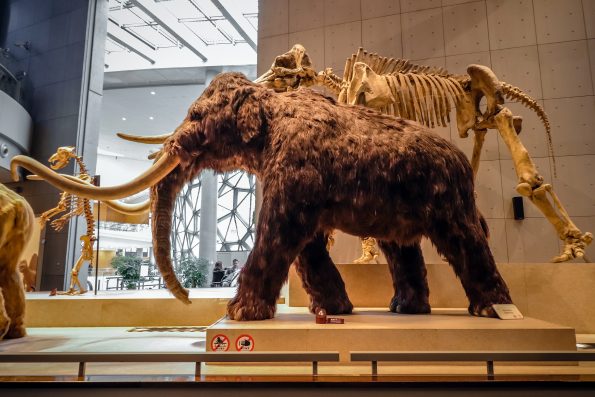For 52,000 Years, This Woolly Mammoth Skin Remained Frozen In Siberia, And Now Scientists Have Reconstructed The Mammoth’s Chromosomes

For 52,000 years, the skin of a woolly mammoth has remained essentially freeze-dried in Siberia thanks to the region’s subarctic climate.
A team of international scientists was able to create a three-dimensional reconstruction of the mammoth’s chromosomes.
This feat had never been accomplished before for any ancient DNA sample. It provided insight into which genes were active in the skin cells when the mammoth was still living.
Shortly after it died, the mammoth underwent spontaneous freeze-drying. Its DNA was preserved in a dehydrated, glass-like state that allowed it to survive for thousands of years. In 2018, the remains were discovered in northeastern Siberia.
To reconstruct the mammoth’s genome, scientists extracted DNA from a skin sample that was taken behind the mammoth’s ear.
Then, they analyzed the sample using a method known as Hi-C that can identify which sections of DNA were positioned close together and interacting with each other when the animal was walking the Earth.
“Imagine you have a puzzle that has three billion pieces, but you don’t have the picture of the final puzzle to work from,” said Marc A. Marti-Renom, a co-author of the study, an ICREA research professor, and structural genomicist.
“Hi-C allows you to have an approximation of that picture before you start putting the puzzle pieces together.”
A map of the mammoth’s genome was produced based on the genomes of modern elephants. The analysis revealed that woolly mammoths had 28 chromosomes, which is the same number of chromosomes that Asian and African elephants have today.

Akkharat J. – stock.adobe.com – illustrative purposes only
The chromosomes were so well-preserved that they included nanoscale loops that connected transcription factors and genes.
The researchers were also able to detect which genes were active and inactive within the skin cells of the mammoth.
They found that the mammoth skin cells had distinct patterns of gene activation compared to the skin cells of the Asian elephant, its closest living relative. In addition, there were genes possibly related to cold tolerance and woolly-ness.
“For the first time, we have a woolly mammoth tissue for which we know roughly which genes were switched on and which genes were off,” Marti-Renom explained.
“This is an extraordinary new type of data, and it’s the first measure of cell-specific gene activity of the genes in any ancient DNA sample.”
The method employed in this study works best on fossils that are unusually well-preserved, but the hope is that it can also be used to analyze other ancient DNA specimens, such as Egyptian mummies.
The next step for mammoths is to possibly use the new genetic data for woolly mammoth de-extinction efforts at Colossal Biosciences.
Several institutions, including the National Science Foundation, the National Institutes of Health, the Welch Foundation, McNair Medical Institute, the European Research Council, and more, supported this research.
Sign up for Chip Chick’s newsletter and get stories like this delivered to your inbox.
More About:Animals





